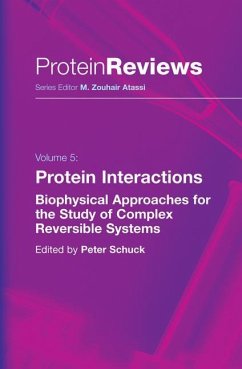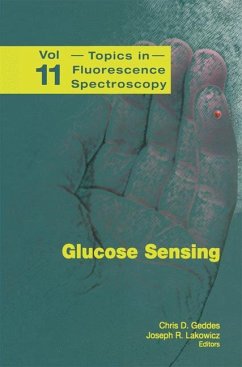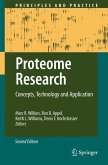This volume, part of the Protein Reviews book series, will successfully and clearly examine how biophysical approaches can be used to study complex systems of reversibly interacting proteins. It will deal with the methodology behind the research and how to synergistically incorporate several methodologies for use. The study of complex systems cannot be described or summarized in the abstract; therefore, each chapter would treat and introduce the reader to different biological systems, include a brief summary of the physical principles, and mention practical requirements (such as amount of material required), but not be of recipe type, and instead rapidly lead to principles and examples of applications to complex systems.
When I was invited to edit this volume, I wanted to take the opportunity to assemble reviews of different biophysical methodologies for protein interactions at a level suf?ciently detailed to understand how complex systems can be studied. There are several excellent introductory texts for biophysical methodologies, many with hands-on descriptions or embedded in general introductions to physical b- chemistry. The goal of the present volume was to present state-of-the-art reviews that do not necessarily enable the reader to carry out these techniques, but to gain a deep understanding of the biophysical observables, to stimulate creative thought on how the techniques may be applied to study a particular biological system, and to foster collaboration and multidisciplinary work. Reversible protein interactions involve noncovalent chemical bonds, pro- cing protein complexes with free energies not far from the order of magnitude of the thermal energy kT. As a consequence, they can be highly dynamic and may be controlled, for example, by protein expression levels and changes in the intracel- lar or microenvironment. Reversible protein complexes may have suf?cient stab- ity to be puri?ed for study, but frequently their short lifetime essentially limits their existence to solutions of mixtures of the binding partners in which they remain populated through dissociation and reassociation processes. To understand the function of such protein complexes, it is important to study their structure and dynamics.
When I was invited to edit this volume, I wanted to take the opportunity to assemble reviews of different biophysical methodologies for protein interactions at a level suf?ciently detailed to understand how complex systems can be studied. There are several excellent introductory texts for biophysical methodologies, many with hands-on descriptions or embedded in general introductions to physical b- chemistry. The goal of the present volume was to present state-of-the-art reviews that do not necessarily enable the reader to carry out these techniques, but to gain a deep understanding of the biophysical observables, to stimulate creative thought on how the techniques may be applied to study a particular biological system, and to foster collaboration and multidisciplinary work. Reversible protein interactions involve noncovalent chemical bonds, pro- cing protein complexes with free energies not far from the order of magnitude of the thermal energy kT. As a consequence, they can be highly dynamic and may be controlled, for example, by protein expression levels and changes in the intracel- lar or microenvironment. Reversible protein complexes may have suf?cient stab- ity to be puri?ed for study, but frequently their short lifetime essentially limits their existence to solutions of mixtures of the binding partners in which they remain populated through dissociation and reassociation processes. To understand the function of such protein complexes, it is important to study their structure and dynamics.








